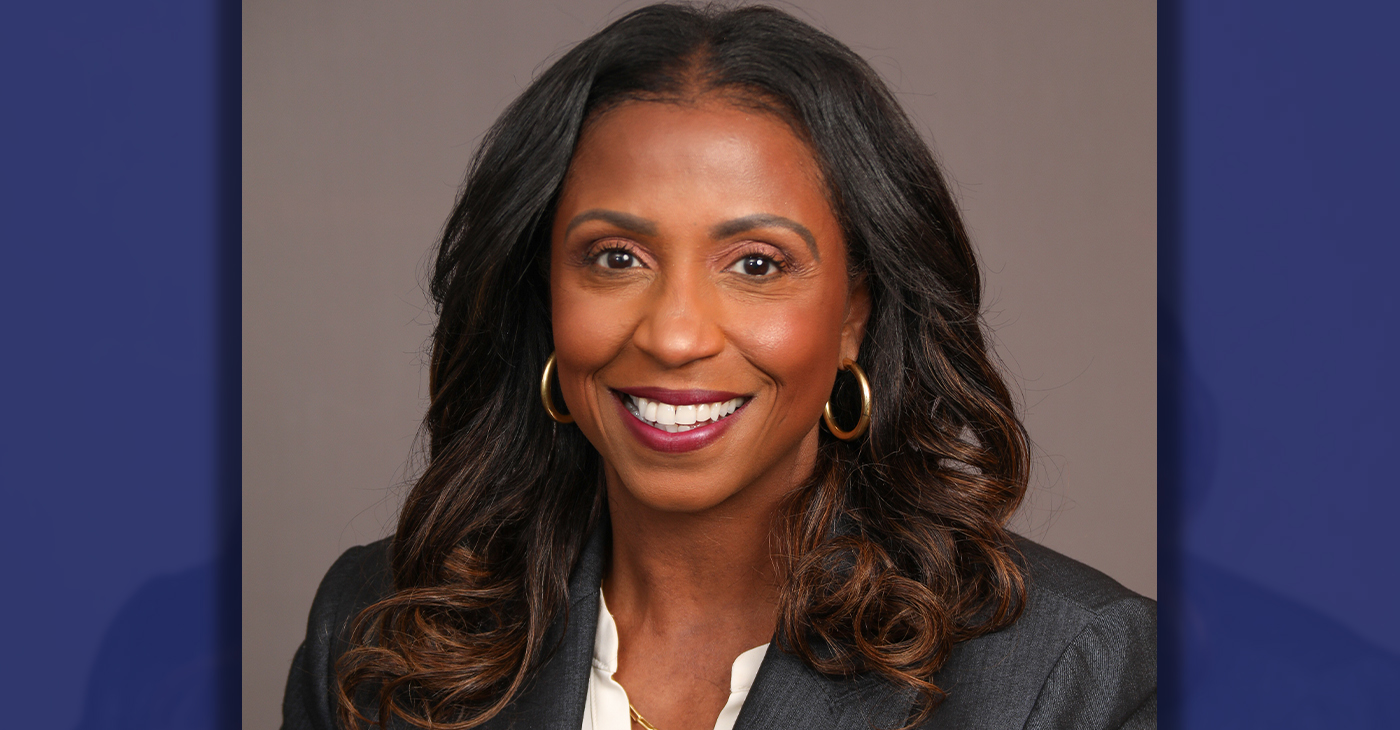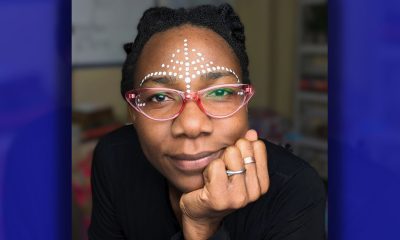Business
Black Business Spotlight: South Minneapolis Black history inspires Funky Grits
MINNESOTA SPOKESMAN-RECORDER — The Twin Cities is enjoying a restaurant boom with unique eateries offering niche foods and dining experiences.

By Jonika Stowes
The Twin Cities is enjoying a restaurant boom with unique eateries offering niche foods and dining experiences. Among them is South Minneapolis’ Funky Grits.
The Black-owned restaurant boasts a menu like none other in the area, with soul food recipes based off of cheesy grits with a twist towards vegan ingredients. But don’t be mistaken — a visit offers something for all palettes, with burgers, sausage and shrimp also on the menu. There are also beer and wine offerings for those inclined.
Entrepreneurship runs in owner Jared Brewington’s blood. His great grandfather was self-employed, and his father, Mark Brewington, owned Rib Cage in the late ‘70s and early ‘80s in South Minneapolis.
He credits that legacy, along with his commitment to the community, for opening his storefront on the corner of 38th Street and Chicago Avenue. He and his five siblings grew up blocks away on 42nd Street, where his father also worked in real estate at Bailey Realty Company on 45th Street and 4th Avenue.
“This history means a lot to me,” said Brewington. “I’m from here, exist here, and I want to have my business here. That’s all I remember growing up is historical Black businesses up and down 38th street,” said Brewington. “My biggest fight is showing people there’s a resource and a consistency on this corner that’s full of beaming love, and this community is wide open in diversity, love and acceptance.”
First starting out as a pop-up, the business took four years to open its doors. Brewington gained notoriety and a hungry consumer base with showings at venues like the 2018 Super Bowl. He also tried opening at a location on Lyndale Avenue, which led to delays. He experienced more delays dealing with plumbing and funding issues when he finally found the current location, but he never gave up.
[media-credit name=”Photo by Chris Juhn” align=”alignright” width=”300″] [/media-credit]
[/media-credit]
He and his former business partner and chef Jordan Carlson pushed through, opening August of last year. With a ‘70s Tupperware vision, he hired Jim Smart of Smart Associates to design the restaurant’s bright interior, and he did the construction himself.
Carlson assisted with the restaurant’s build-out and pop up locations. “I’ve always been the majority owner,” said Brewington. According to him, the partnership separation cleared the way for his new African American chef Portia, who brings cultural sensitivities to cooking that supports the direction in which he wants Funky Grits to head.
For Brewington, the major areas where he had to bring in expertise were in high-level finances and labor modeling. He admitted, however, that one of the challenges was labor management when the eatery opened.
“Accountability is not the same across the board. A 17-year-old’s version of accountability is different than a 36-year-old’s, and they both could be not the ones you’d think,” said Brewington through laughter, speaking of employee call-outs and not showing up for shifts. He now successfully employs between 14 and 20 people.
Jordan Brewington, Jared’s younger brother, has also come on to help in the kitchen. “He’s the rock — us Brewingtons have a work ethic,” said Jared.
He also counts on support from his mentors: Brent Frederick of Minneapolis’ Jester Concepts as his restaurant mentor, and the retired CTO of Cargill and Ron Christenson, former board chair of Compatible Technology International (CTI), is his nonprofit mentor.
The restaurant business represents a major shift for Brewington, who has worked a wide range of jobs, including telecommunications as one of the first few hundred employees of Quest Communications. He then fell in love with start-up companies and the service side of high-end technology, and then found himself in real estate finances. It was then that he opened his own construction business building homes, which led him into renewable energy as a consultant and adviser to businesses.
Brewington also sits on the board of CTI. The nonprofit provides African women farmers with access to innovative post-harvest tools for sustainable food production.
“In the entrepreneurial world, you pick up many skills and often take that new skill and move on, not sit on the line all day, and maybe be more on the macro side,” said Brewington. “The things I’ve learned along the way have combined for something else.”
It’s also a stark departure from the 20-acre outskirt farm community from which he commutes daily into the heart of the Minneapolis Kingfield neighborhood. Brewington said he has longed for rural life since he was a kid with wide-open spaces, pastures and woods. This is his quiet space with his pets and family.
Right now, he’s shaking hands with a first-time customer who’s raving over a Funky Grits dish he just enjoyed.
Funky Grits is located at 805 E. 38th Street in Minneapolis. For more info, visit funkygrits.com.
This article originally appeared in the Minnesota Spokesman – Recorder.
Business
Maximizing Your Bank Branch Experience
In a world of online tools that let you make banking transactions with the touch of a button, the idea of visiting a branch might seem unnecessary. However, if you haven’t visited your local branch recently, you might be surprised by what it has to offer. Your branch is much more than a place to deposit and withdraw money – it can offer the opportunity to build valuable relationships with people who can help you achieve financial independence.

Sponsored by JPMorgan Chase & Co.
In a world of online tools that let you make banking transactions with the touch of a button, the idea of visiting a branch might seem unnecessary.
However, if you haven’t visited your local branch recently, you might be surprised by what it has to offer. Your branch is much more than a place to deposit and withdraw money – it can offer the opportunity to build valuable relationships with people who can help you achieve financial independence.
Diedra Porché, Head of Community and Business Development at Chase, talks about how the bank model has evolved to maximize the branch experience for customers; how connecting with your local branch team can help you think differently about money and investing for your future.
How can a customer feel connected to a bank branch?
I love that question because we ask ourselves the same thing every day. Being part of the community means meeting with local leaders to find out what they need from us and then designing our branches around that. For example, at some of our community branches we have what we call a living room where we can host financial workshops, small business pop-up shops or nonprofit organization meetings. We also hire locally. You feel much more connected talking about financial aspirations with people from your community who went to the same high school, place of worship or maybe frequented the same recreation center down the street when they grew up.
How can I build a relationship with my bank?
Customers should feel comfortable sharing their goals, needs and wants with their banker. Also, it helps to remember the Community Manager is there to help solve your finance challenges and build a roadmap for success. You might have a short-term or long-term goal to open a business, build your credit, become debt-free, buy a home, or save for retirement, and our community team can help. At Chase, we strive to make dreams possible for everyone, everywhere, every day. Your financial future starts with building those relationships.
How can customers change negative perceptions they have about managing their money?
Far too often, customers are intimidated when they visit a bank. Our goal is to demystify banking and money myths empowering people to make the right decisions. For example, a big myth is assuming you need a lot of money to have a bank account. You don’t! Another myth is you need to carry a balance on your credit card to build credit — actively using your credit card can demonstrate that you can use credit responsibly but carrying a balance won’t necessarily improve your credit score. Finally, understanding mobile and online banking safety is key. There are so many safeguards and protections in place to guard your personal information and funds.
What’s an easy step one can take to shift their financial behavior right now?
Cultivating self-awareness is a good first step. Start by taking inventory of your spending. Be honest with yourself about what you need and what you want. Too often, people confuse the two, which leads to bad decisions. Rent is something you need to pay. An extra pair of shoes is something you may want but before you buy them ask yourself if that’s the best use of your hard-earned money. Too often, our beliefs and our fears shape our financial realities. If any of those beliefs are limiting your financial behavior, it’s important to question and examine them, and then decide you’re open to learning something different.
What’s one perception about banking that you’d like to change?
I think folks are surprised there are so many resources available and accessible both at our branches and online, it’s always a good idea to visit a nearby branch and speak to a Community Manager or banker. Outside of what we offer in-branch, our teams also work with local neighborhood partners who provide a variety of services to support the community, businesses and residents. I received a unique piece of feedback from an employee who started with the bank and had lived in the same community his whole life. When he visited his local community branch, he said, “Diedra, when I walked in, I felt dignified.” Every time I recount that story, it warms my heart because that’s what we want — we want our centers to belong to the community.
Activism
Oakland Post: Week of May 1 – 7, 2024
The printed Weekly Edition of the Oakland Post: Week of May 1 – 7, 2024

To enlarge your view of this issue, use the slider, magnifying glass icon or full page icon in the lower right corner of the browser window. ![]()
Activism
Oakland Post: Week of April 24 – 30, 2024
The printed Weekly Edition of the Oakland Post: Week of April 24 – 30, 2024

To enlarge your view of this issue, use the slider, magnifying glass icon or full page icon in the lower right corner of the browser window. ![]()
-

 Community2 weeks ago
Community2 weeks agoFinancial Assistance Bill for Descendants of Enslaved Persons to Help Them Purchase, Own, or Maintain a Home
-

 Activism4 weeks ago
Activism4 weeks agoOakland Post: Week of April 3 – 6, 2024
-

 Business3 weeks ago
Business3 weeks agoV.P. Kamala Harris: Americans With Criminal Records Will Soon Be Eligible for SBA Loans
-

 Activism3 weeks ago
Activism3 weeks agoOakland Post: Week of April 10 – 16, 2024
-

 Community3 weeks ago
Community3 weeks agoAG Bonta Says Oakland School Leaders Should Comply with State Laws to Avoid ‘Disparate Harm’ When Closing or Merging Schools
-

 Community2 weeks ago
Community2 weeks agoOakland WNBA Player to be Inducted Into Hall of Fame
-

 Community2 weeks ago
Community2 weeks agoRichmond Nonprofit Helps Ex-Felons Get Back on Their Feet
-

 Community2 weeks ago
Community2 weeks agoRPAL to Rename Technology Center for Retired Police Captain Arthur Lee Johnson
























































